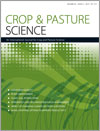For crops grown in Mediterranean environments, translocation of pre-anthesis assimilates to the fruit is of great importance, because hot and dry conditions during fruit ripening diminish net assimilation rate and nitrogen (N) uptake. This field study was conducted to assess the pattern of dry matter and N accumulation and the role of assimilate translocation in pod development of oilseed rape plants in a Mediterranean environment. Four cultivars of winter oilseed rape (Brassica napus L.), i.e. three hybrids (Royal, Exact, Excalibur) and an inbred line (Fortis), were grown for two growing seasons (2005–06 and 2006–07) in northern Greece. On average, 581, 1247, 1609, and 2749 growing degree-days (GDD) were required for six leaves, stem elongation, 50% anthesis in main stem, and physiological maturity in the first year, and 539, 1085, 1601, and 2728 GDD in the second year. The R2 of the modified Richards function indicated that aboveground biomass and N accumulation were described with high approximation efficacy. The across-cultivars genotype mean maximum predicted total aboveground dry matter and N content were 1368.8 and 21.4 g m–2 in 2006 and 1655.1 and 25.4 g m–2 in 2007. In 2007, dry matter and N translocation from vegetative tissues to pods were 464.4 and 21.0 g m–2, and significantly higher than the corresponding values recorded in 2006 (264.4 and 17.0 g m–2). These differences were due to greater amounts of dry matter and N accumulating at anthesis and the greater sink capacity of plants (pod number) in 2007. The fact that pod development occurred in a period when N accumulation by oilseed rape plants had stopped led to high values of contribution of pre-anthesis N accumulation to pod N content in both years (92.8% in 2006 and 96.6% in 2007). Results indicated that hot and dry weather post anthesis reduced dramatically the net assimilation rates; thus, translocation of pre-anthesis assimilates was crucial for pod development. The results demonstrate that variation in weather conditions between growing seasons is one of the main causes of seasonal variation in oilseed rape productivity under Mediterranean conditions.
How to translate text using browser tools
30 May 2013
Dry matter and nitrogen partitioning and translocation in winter oilseed rape (Brassica napus L.) grown under rainfed Mediterranean conditions
A. N. Papantoniou,
J. T. Tsialtas,
D. K. Papakosta
ACCESS THE FULL ARTICLE

Crop and Pasture Science
Vol. 64 • No. 2
June 2013
Vol. 64 • No. 2
June 2013
Brassica napus
drought
dry matter accumulation
growing degree-days
nitrogen accumulation
phenology
translocation




